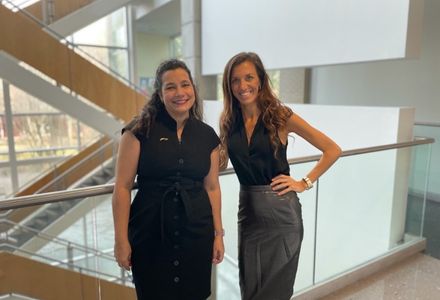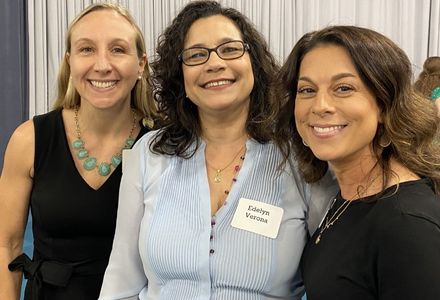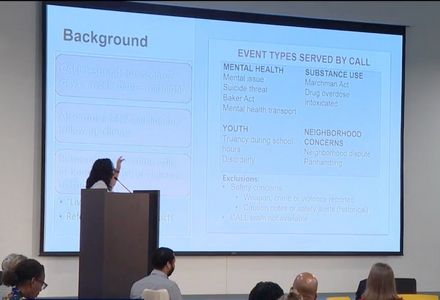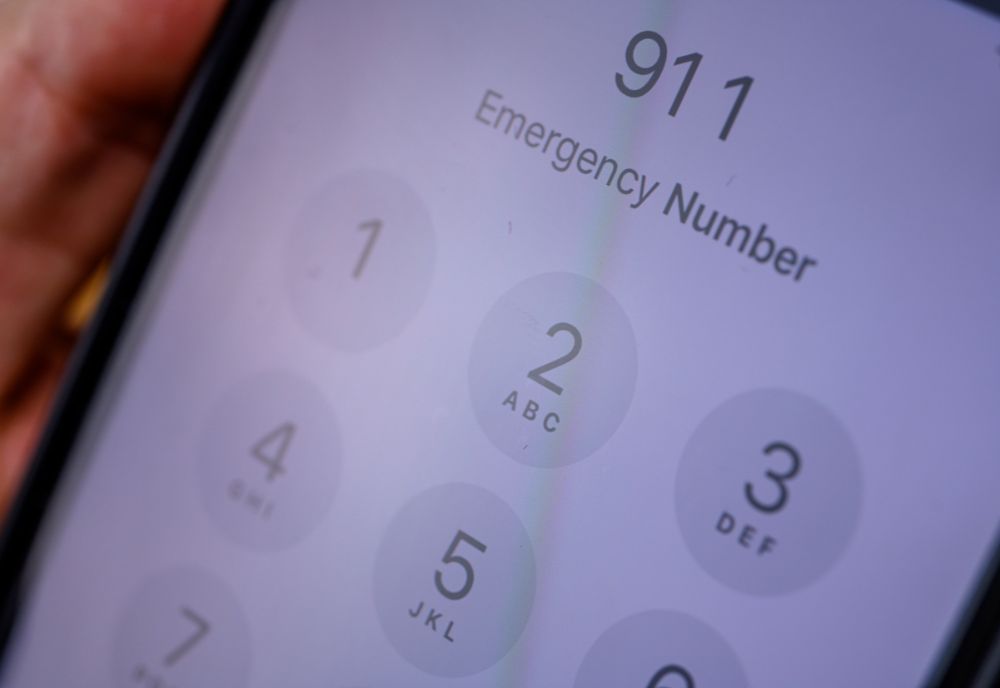The University of South Florida’s Center for Justice Research and Policy (CJRP) has been funded to evaluate a new community police program in St. Petersburg, Fla. where case workers are sent to respond to emergency, non-crime 911 calls instead of law enforcement.

Edelyn Verona, PhD, (left) with Bryanna Fox, PhD. (Photo source: CJRP)
The Community Assistance and Life Liaison (CALL) program, a collaboration between the St. Petersburg Police Department (SPPD) and Gulf Coast Jewish Family Community Services, was enacted in 2021 to divert non-crime emergency calls—such as mental health, substance abuse, panhandling, etc.—to case workers called ‘community navigators.’
USF experts at the CJRP were contracted by the Foundation for Healthy St. Petersburg—a nonprofit addressing health disparities and equity issues in Pinellas County—to conduct an independent evaluation of the extent to which the CALL program is being implemented “equitably,” according to their recent technical report.
Dr. Edelyn Verona, professor in the Department of Psychology at the USF College of Arts and Sciences, cofounded the CJRP with Dr. Bryanna Fox, associate professor in the Department of Criminology at the USF College of Behavioral and Community Sciences.
Under the direction of Verona and Fox, the CJRP—the first of its kind in Florida—hosts an interdisciplinary team of scholars and practitioners focused on the study of crime, violence, criminal and social justice policy to provide evidence-based policy change to improve the justice system.
“The CALL program evaluation is actually being done in phases,” Verona said. “In phase one of our evaluation, it involved looking both at their written protocols and talking to leadership on how they are implementing their program while also looking at the data.”
Verona presented phase one of those findings in late February during a public event hosted by the Center for Health Equity in St. Petersburg, Fla.
Verona and her team began their evaluation by reviewing demographics of people served and what type of calls were being received, such as calls for someone who was suicidal or calls for someone who was heavily intoxicated.
“Calls must be ones in which there wasn’t a sense that there would be a risk of violence to the navigators. This is an important piece because they had to exclude certain calls that might be eligible if there was a risk to the safety of the navigator,” Verona said.
Verona and her team found that the CALL program is responding to about 57 percent of all non-crime calls, with a substantial number of non-crime calls, about 43 percent, still being routed to the SPPD.
They also found that the CALL team made the most contacts for events involving mental health, including mental issues, suicide threat, intoxication and drug overdoses.

Edelyn Verona, PhD, (center) with Megan McGee, MPA, Police Special Projects Manager with the St. Petersburg Police Department (left), and Nicole Guincho, LMHC, Director of Clinical Services with Gulf Coast Jewish Family & Community Services. (Photo courtesy of Dr. Edelyn Verona)
In contrast, SPPD-responded calls were more likely to involve youth (disorderly juvenile or truancy), Marchman Acts (substance use hospitalization), and neighborhood concerns (panhandling).
Verona and her research colleagues were also able to determine which zip codes were “hot spots” for the most calls and noted the demographics for those areas.
“Overall, I think this program is moving well, there were a few places that we could see some potential disparities and we’ve been working with them to address them,” Verona said.
One of those areas is in calls dealing with youth.
“Youth calls are more likely to occur in disenfranchised communities,” their report findings state. “And they are more likely to be handled by SPPD than CALL. This means that youth of color are likely being served by the police rather than receiving CALL services.”
Their analysis suggests that part of this may be due to the frequency (around 40%) of truancy calls that originate within schools, which are contractually obligated to be responded to by the School Resource Officer rather than diverted to the CALL team, according to Verona.
Additionally, the higher frequency of SPPD-responded disorderly juvenile contacts may be because these calls can originate as an event type indicating violence (such as a battery on a parent), which are directly routed to SPPD rather than CALL.
Verona and her team, however, applauded SPPD for their quick implementation of a non-police civilian response model.
“This type of model is highly unique,” Verona said. “Most [police] jurisdictions have a specialized unit to deal with mental health and other types of non-crime events, which tend to be trained officers or officers who have volunteered to be trained to handle de-escalation and mental health issues.”
Other police forces are using what Verona calls a “co-responder model,” meaning that both a mental health worker and a police officer respond jointly to the calls.

Edelyn Verona, PhD, shares findings during a recent community discussion during a public event hosted by the Center for Health Equity in St. Petersburg, Fla. (Photo courtesy of Dr. Edelyn Verona)
“The St. Pete Police Department is one of the few I’ve seen where it is just the mental health worker or case worker that is going alone to these calls,” Verona said. “And that's really important because it shifts the focus toward service provision.”
Verona commended the SPPD for utilizing this model from the beginning.
“One of the benefits of these types of programs helps law enforcement to focus on things they do best, which is crime reduction, and diverts things they usually have to take care of to the people who are best trained to do that, such as case workers and mental health workers,” Verona says. “It saves police resources and decreases unnecessary contact between police and vulnerable communities that have traditionally been overpoliced.”
Verona says that phase two of the evaluation will include interviews with community navigators and SPPD officers, as well as community members and other stakeholders.
“We’re going to get a sense of the level of acceptability of the program; how both those involved and the recipients, are perceiving the program,” she said. “Its strengths and weaknesses, where it should go next and some of the obstacles they see.”
She said the team will also join in on ride-alongs during calls to further expand their research reach.
“We are aiming to enhance and improve the existing program, making sure the community knows it exists and are aware of what it provides, as well as how it can be integrated into the broader social service world,” Verona said.
